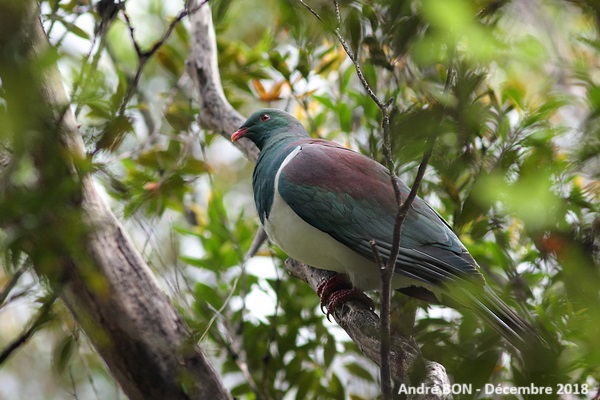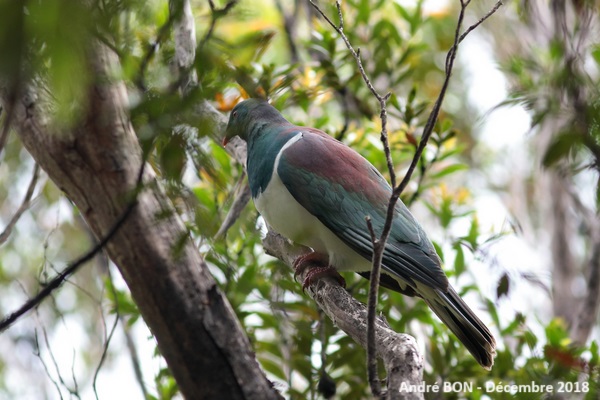

| New Zealand Pigeon (Hemiphaga novaeseelandiae (Gmelin, 1789)) |


|
|
Scientific name: Hemiphaga novaeseelandiae (Gmelin, 1789) Common name: New Zealand Pigeon Other names: Maori name: Kereru. French name: Carpophage de Nouvelle-Zélande Order: Columbiformes Family: Columbidae Size: Body size: 50 to 51 cm; Weight: 550 to 850 g; Wingspan: About 75 cm. Habitat: Forest habitats with a preference for areas where fruit trees or flowers grow, plantations, parks and gardens. Food: Fruits, flowers and buds, as well as leaves in case of lack of fruits or flowers. Its ability to swallow large fruits allows it to be very useful for the dispersal of the seeds of a number of endemic trees. Nesting: The nest is a small platform of twigs hidden in the foliage of a tree. There is only one egg per clutch. The chick is fed by regurgitation. Migration: Sedentary. Geographic area: New Zealand and surrounding islands. |
The New Zealand Pigeon has bright iridescent green upperparts with metallic bronze-green and purple sheen. The back, rump and tail are duller. For the underparts the chin, neck and chest are dark green and contrast with the white belly. A narrow white stripe runs up the sides between the dark green breast and the wings. The bill and eyes are red. The legs are dark red. Males and Females are similar. During the breeding period, males perform nuptial flights typical of birds of the same family with vertical ascents followed by gliding descents, wings and tail outstretched. |
| [To know more about the New Zealand Pigeon] [Next picture] [Top] |

|
Here is my only observation of the New Zealand Pigeon during a one-month stay. It must be said that I haven't walked thru the forest that often. |
| [To know more about the New Zealand Pigeon] [Previous picture] [Top] |

|
The photos were not very easy because of a low angle position and a pigeon which preferred to look the other way. |